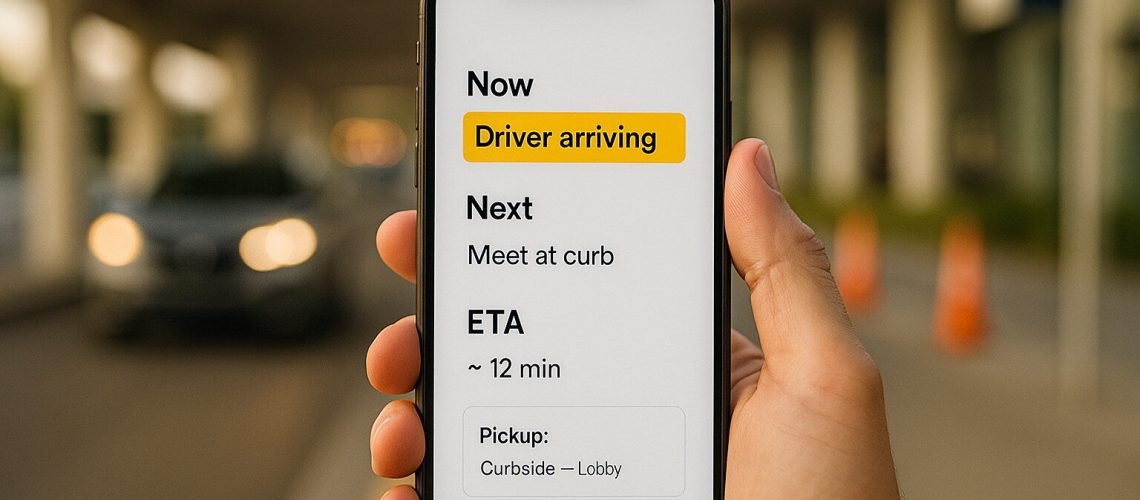Why Transparency Works
Transparency in web design plays a crucial role in enhancing user experience by addressing the psychological responses of visitors. The human brain tends to react negatively to vague information, leading to confusion and frustration. When users encounter unclear messages or ambiguous details, their cognitive load significantly increases. This heightened mental effort can cause stress and ultimately result in higher drop-off rates. By implementing transparency through clear communication and status updates, website designers can effectively mitigate these negative outcomes, fostering a more relaxed and engaging browsing experience.
The integration of explicit information serves to set accurate expectations for users. For instance, using a straightforward status line that indicates the time required to complete a task or receive a service can alleviate uncertainty. Instead of generic phrases like “Loading…” or “Your request is being processed,” designers may opt for specific time ranges, such as “This will take approximately 3 to 5 minutes.” This clarity not only streamlines the user’s interaction but also instills a sense of control over the experience.
Employing succinct and direct language aids in lowering cognitive load. Words convey necessity, but clarity ensures understanding. For example, when indicating that a user action is being taken, instead of saying “Please wait,” a web designer could use “Processing your request, please hold on for 30 seconds.” The latter eliminates ambiguity while informing users precisely what to expect. Practical applications like these illustrate how transparency can be operationalized in web design, aligning users’ mental frameworks with the interface they interact with.
Ultimately, the benefits of transparency in web design manifest in reduced stress levels and lower drop-off rates. By harnessing clear communication, web designers can improve the overall user experience, leading to increased engagement and satisfaction. This practice will become increasingly essential as the digital landscape evolves, emphasizing the need for transparency to foster trust and reliability in online interactions.
Practical Applications of Transparency in Web Design
Integrating principles of transparency in web design can significantly improve user experience and enhance engagement across various platforms. To achieve this, website owners must adopt practical strategies that facilitate clear communication. One effective approach is to implement a compact status banner. This element serves two main purposes: it communicates the current step the user is on while simultaneously outlining the next action they need to take, along with an estimated time of arrival (ETA) for that action. This not only sets clear expectations but also reduces anxiety and uncertainty among users.
Critical areas where these transparency principles can be applied include booking processes, onboarding procedures, and customer support interfaces. For instance, during a booking process, a well-designed status banner can inform the user whether they are selecting a date, confirming payment, or reviewing their order. By providing an expected completion time, users can feel reassured that they will be guided through the process efficiently.
During onboarding, highlighting the progress, such as “Step 1 of 3,” can keep users motivated and prevent drop-offs. Furthermore, customer support pages that offer real-time updates on ticket statuses — such as “Your request is being reviewed” or “Expected response time: 2 hours” — create a transparent environment where users feel informed and involved.
Equally important is the practice of updating the status after each significant action taken by the user. For example, once a payment is processed, updating the status banner to reflect this change reinforces transparency and keeps users engaged with immediate feedback. Frequent updates help manage user expectations and instill confidence in the web design, fostering a positive relationship between the user and the site. Overall, these strategies will streamline user interactions and drastically lower stress levels, leading to a more enjoyable online experience.
Accessibility That Builds Trust
Ensuring transparency in web design extends beyond mere aesthetics; it is fundamentally about fostering trust and inclusivity among all users, especially those with disabilities. Accessibility can significantly enhance user experience and build loyalty, as it allows everyone to engage with content equitably. Therefore, adopting inclusive design principles is essential for any website aiming to create a transparent environment.
One of the primary best practices for promoting accessibility involves effectively communicating status changes to assistive technologies. This requires web designers to incorporate ARIA (Accessible Rich Internet Applications) attributes, which inform screen readers about changes on the page, such as updates in content or navigation states. By doing so, users with visual impairments are kept informed, allowing them to navigate a site more confidently and without confusion, directly contributing to a streamlined user experience.
Moreover, the visual design elements should not be underestimated in fostering an atmosphere of trust. Web designers should prioritize strong color contrast and readable typography. By utilizing fonts that are legible and visually distinct, as well as ensuring that text contrasts adequately with background colors, designers can help all users, including those with visual impairments, to absorb and comprehend information effortlessly. Avoidance of solely relying on color to convey meaning is also crucial; including text labels or pattern differentiation enhances clarity and supports comprehension for those with color blindness.
Adopting these techniques not only enhances transparency and accessibility but also meets the expectations outlined by the Americans with Disabilities Act (ADA) and Section 508 of the Rehabilitation Act (EAA). By committing to these practices, web designers create a more trustworthy atmosphere that diminishes user stress and drop-offs, thus improving overall website engagement.
The Bottom Line: Clarity Lowers Stress
In the realm of web design, the significance of clarity cannot be overstated. When users navigate a website, their experience heavily influences their emotional state, which in turn affects their decision-making processes. Clarity in design mitigates stress, ensuring that users can easily find the information or functionality they seek without encountering unnecessary obstacles. This clarity is achieved through intuitive navigation, straightforward instructions, and clear status updates, which serve to guide users throughout their journey on the site.
Empirical studies have consistently demonstrated a strong correlation between user experience clarity and conversion rates. When users feel confident in the information presented to them, they are far less likely to abandon their search prematurely. The presence of clear status updates, such as loading indicators and estimated completion times, fosters a sense of control that reassures users during their online interactions. This reassurance can dramatically lower the stress associated with online tasks, subsequently leading to decreased drop-off rates.
Moreover, designers have an opportunity to enhance user engagement through transparency in their interface design. By providing users with predictable experiences and informing them of any potential delays or actions needed, designers can foster an atmosphere of trust. Users are more likely to engage with a site that openly communicates and simplifies their journey. Therefore, embracing transparency as a foundational principle in web design not only enhances user satisfaction but also directly contributes to improved conversion metrics.
In conclusion, clarity in web design is essential for lowering user stress and minimizing drop-offs. As the digital landscape continues to evolve, web designers should prioritize transparency in their practices, understanding that clear communication is vital for optimizing user experience and achieving higher conversion rates.



